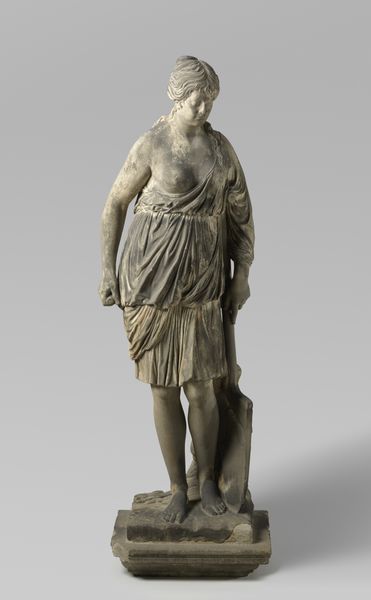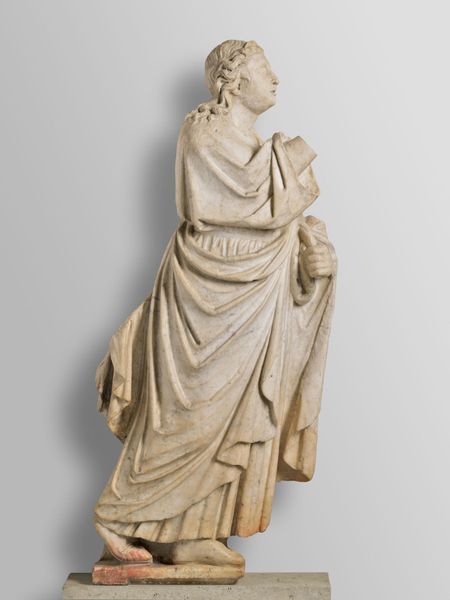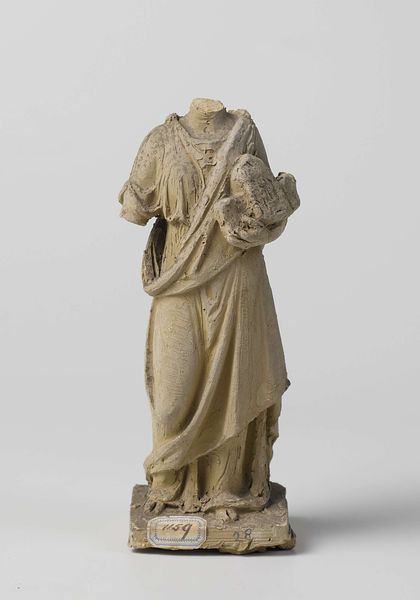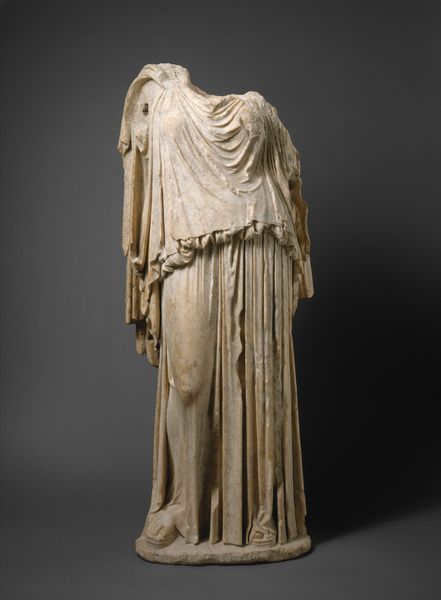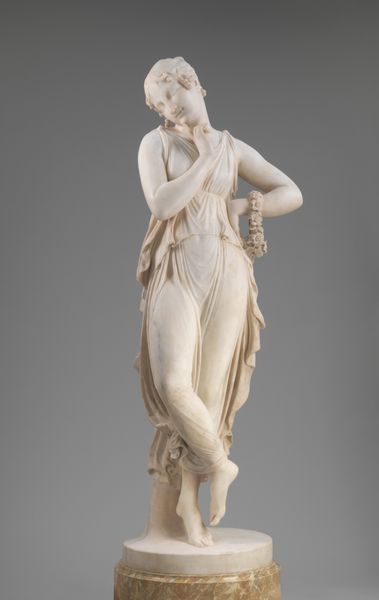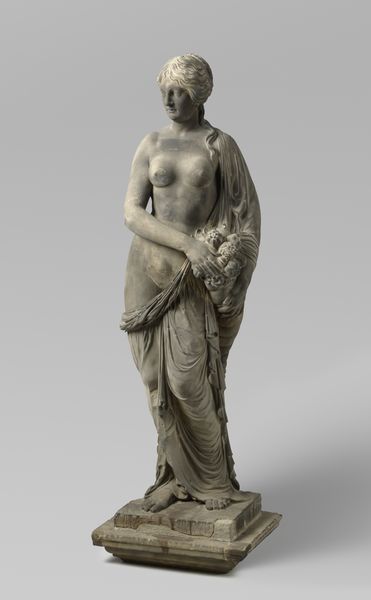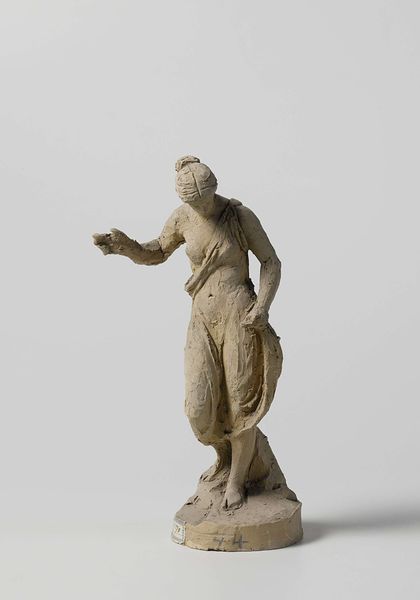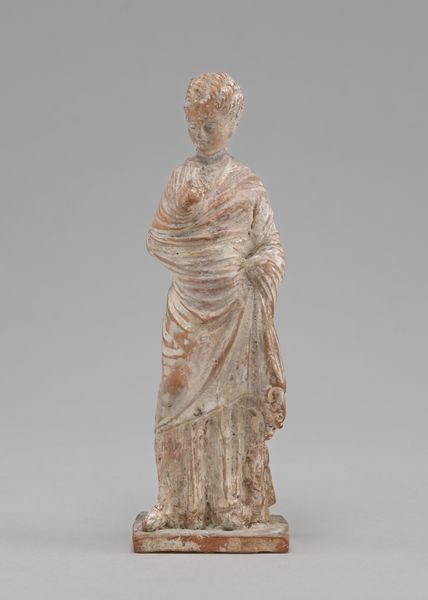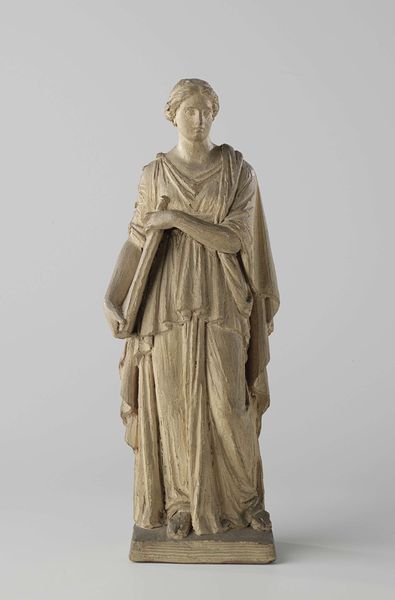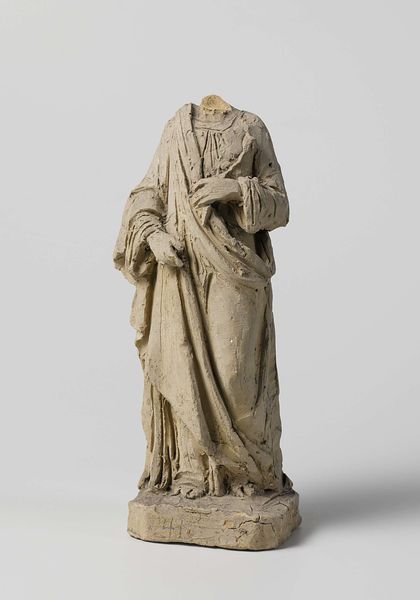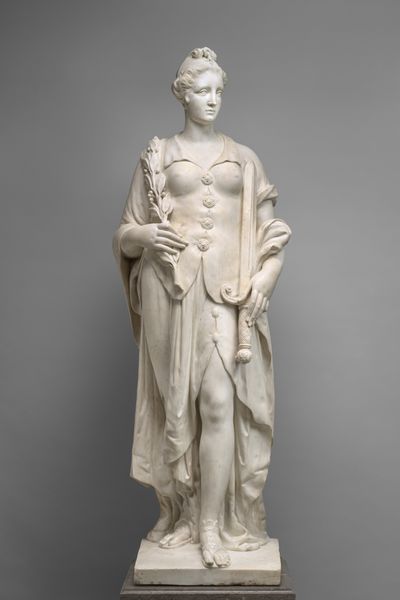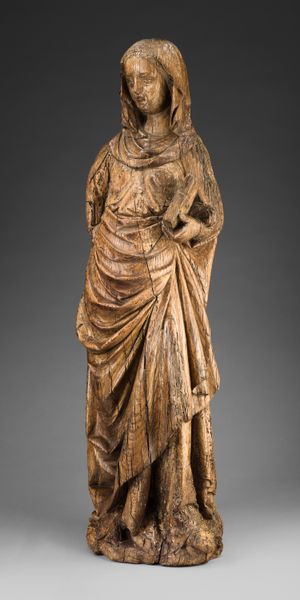
sculpture, marble
#
portrait
#
baroque
#
sculpture
#
figuration
#
sculpture
#
marble
Copyright: Rijks Museum: Open Domain
Artus Quellinus created this terracotta sculpture, Justice, in the 17th century. Terracotta, meaning "baked earth" in Italian, is a coarse, porous clay that has been used for sculpture since ancient times. The reddish-brown color and slightly rough texture of the clay give the sculpture a warm, tactile quality. Quellinus likely built up the figure gradually, adding coils and slabs of clay, refining the surface with tools to create the flowing drapery and serene expression. We can imagine Quellinus in his studio, surrounded by the tools of his trade, carefully manipulating the clay to bring his vision to life. Terracotta, while a humble material, allowed Quellinus to achieve a remarkable level of detail and expression. It’s a reminder that great art can be made from the simplest of materials, elevated by the skill and vision of the artist. Appreciating the materiality and making of this sculpture allows us to move beyond traditional distinctions between high art and craft.
Comments
rijksmuseum about 2 years ago
⋮
Both façades of the Town Hall are surmounted by three bronze statues. On the front elevation, Peace is flanked by the virtues Wisdom and Justice, of which these terracotta figures are the scale models. On the rear elevation, Atlas shoulders the celestial globe, with Temperance and Vigilance at his side. The message expressed here is that universal peace, on earth and in heaven, depends on these four virtues.
Join the conversation
Join millions of artists and users on Artera today and experience the ultimate creative platform.
